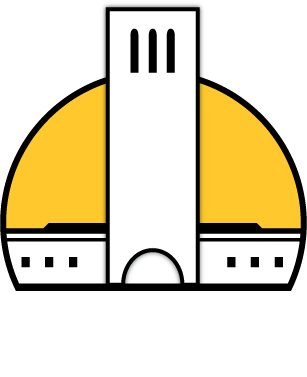If you have ever taken a peek inside the UC Santa Barbara Makerspace before, you might have seen a cluster of identical machines lined up against a wall, quietly at work creating parts of all shapes and colors. These machines are 3D printers, and they are one of the newest and most accessible ways of bringing digital models to life. But what exactly is 3D printing and how is it becoming more prevalent on campus?
In a nutshell, 3D printing, also known as additive manufacturing, is the process of creating an object layer by layer. According to the American Society of Mechanical Engineers, the process can trace its roots back to 1980 when the first 3D printing patent application was filed. The technology continued to grow in the 1980s and 1990s but remained expensive and hard to use, keeping it confined to commercial use. However, between 2009 and 2012, the expiration of key patents allowed new manufacturers to enter the industry, which drove prices down and gave more people access to the technology.
There are a few different methods used in 3D printing, the most common being fused deposition modeling (FDM). This involves heating a material filament until it becomes a flexible, gooey thread. This thread is then carefully extruded onto a flat surface to form its first layer. The foundation is finished and the next layer is added on top, seamlessly bonding to the previous layer due to the residual heat. This process repeats itself over and over again, and in just a few hours — voilà! The final layer is added on top, and the print is complete.
While plastics are the most common materials used in 3D printing, some machines are capable of printing with more exotic materials including aluminum, steel, ceramic and even chocolate. Additionally, it is possible to recycle plastic items into 3D printer filaments, such as empty disposable water bottles. This process reduces waste and promotes sustainability.
The variety of materials and the simplicity of the manufacturing process allows parts to be printed quickly and at relatively low costs, especially when compared to more traditional manufacturing methods such as machining or injection molding.
With so much versatility, it is no surprise that 3D printing has gained traction in many industries. Designers and engineers are increasingly utilizing the tool to quickly and affordably create prototypes, streamlining the design process and allowing for more adaptability. This combination of flexibility and speed were crucial during the initial COVID-19 outbreak. According to the United States Food and Drug Administration (FDA), over 840,000 face masks and shields were 3D printed and provided to healthcare workers in the United States in the within four months of the pandemic.
The National Aeronautics and Space Administration (NASA) has also embraced the technology, using it to produce cheaper and lighter rocket engines. NASA is also in the middle of testing large-scale 3D printers to construct bases on the moon and Mars, highlighting the variety of uses for this technology.
On top of its aforementioned inclusion in the Makerspace, 3D printing has also found its way into classes and departments at UCSB. ME 10: Engineering Graphics: Sketching, CAD and Conceptual Design is an introductory course for mechanical engineering students, where they learn how to create parts for 3D printing and are able to print a miniature test piece of their own design. The UCSB art department also has introduced the technology into their 3D Digital Fabrication Lab, allowing art students and faculty members to incorporate additive manufacturing into their work.
Research has also been done by UCSB faculty in 3D printing. In 2017, materials professor Tresa Pollock received a grant from the U.S. Department of Defense for research into 3D printed materials for extreme environments. Additionally, in 2021, researchers at the labs of then materials assistant professor Chris Bates and professor and department chair Michael Chabinyc developed an innovative, super-soft, 3D printable material with properties similar to human tissue, offering potential applications in highly sensitive electronic devices.
With 3D printing becoming more prevalent across industries, its presence on campus reflects its growing importance in education, research and innovation. Whether you’re designing the next rocket to take humanity to Mars or need a heartfelt, custom birthday gift at the eleventh hour, consider giving 3D printing a try!















3D printing is such an exciting technology, especially with how it’s being used on campus for various projects. It’s amazing to see how it’s being applied in both academic and creative fields. From prototyping to art, the possibilities seem endless. I’ve read iCanvas reviews, and it’s great to see how 3D printing is being incorporated into platforms for even more customized learning tools. It’s incredible to think about how this technology is shaping the future!